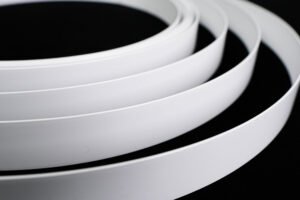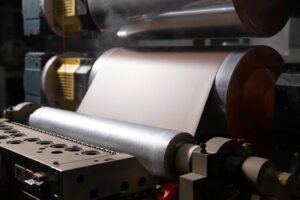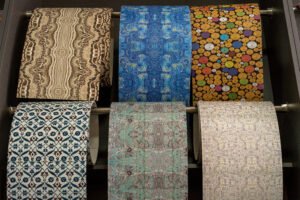Edge banding looks clean and simple—until it starts peeling, chipping, or shifting.
Edge banding problems happen when the material fails to stay bonded or aligned with cabinet surfaces. They can lead to poor durability, visual defects, or even full product rejection in B2B manufacturing.
If you’ve ever had cabinets returned due to quality complaints, keep reading. Let’s break down the problems, fix the root causes, and make sure they never happen again.
What Are the Most Common Edge Banding Problems in Cabinetry?
The most common edge banding problems include peeling, bubbling, cracking, poor adhesion, and color mismatches. These issues hurt the cabinet’s appearance and performance. Most are preventable with better materials and careful processing.

Common Issues Table
| Problem | Description | Visible Effect |
|---|---|---|
| Peeling | Bond between edge band and panel fails | Edge lifts or fully detaches |
| Bubbling | Air gets trapped under edge band | Uneven surface with visible bubbles |
| Cracking | Material gets brittle or expands too much | Breaks or splits along the edge |
| Color mismatch | Edge band doesn’t match board surface | Visible color difference |
| Weak adhesion | Glue or heat isn’t applied correctly | Edges feel loose or shift with touch |
Each of these problems affects both function and design. Even a small defect can ruin the buyer’s perception of quality. If your edge banding fails, your customer might assume the rest of your product is unreliable too.
Why Do Cabinet Edge Banding Issues Occur?
Edge banding issues usually come from poor process control, low-quality materials, or inconsistent environmental conditions. Many of them can be traced back to human error or ignoring best practices.
Dive Deeper
Let’s break down the core causes:
Inconsistent Glue Application
If glue is not spread evenly, some areas won’t bond properly. Gaps lead to peeling or air bubbles. Excess glue causes surface staining or won’t melt correctly.
Poor Material Storage
Edge banding and board materials need dry, stable environments. If stored in places with humidity or temperature swings, materials expand or warp. That causes bubbles and cracking later during bonding.
Low-Quality Edge Banding
Cheap edge banding often shrinks, cracks, or fails to hold color. Over time, it separates from the board or becomes discolored under heat or sunlight.
Operator Mistakes
If operators don’t clean panels, align edges, or maintain machines, errors multiply. Even a slight misalignment can create visible defects.
These issues are avoidable. But they require the entire production process—people, machines, and materials—to work together without shortcuts.

How to Identify Poor Edge Banding on Cabinets
Early detection can save costs, returns, and reputation. I always recommend routine inspection after edge banding. Here’s how I do it.
Dive Deeper
1. Visual Inspection
Look at every edge in direct light. Bubbles and peeling show easily when you move the panel slightly. Uneven gloss can also indicate poor bonding.
2. Touch Test
Run your fingers along the edges. Loose spots feel soft or slightly lifted. Cracks feel sharp. If an edge feels too hot or sticky, the glue might not have cured properly.
3. Color Consistency
Match the edge band with the panel from different angles. Good edge banding should appear seamless. If it looks darker or glossier, that’s a sign of mismatch.
4. Stress Check
Apply gentle pressure on the edge with your thumb. If it shifts or lifts, the bond is weak. Repeat this on several samples to spot consistency problems.
Document your findings. Track failure rates. Use this data to improve upstream process controls.
Practical Solutions for Fixing Cabinet Edge Banding Problems
Fixing edge banding issues takes more than one-time repairs. It’s about changing your workflow so these issues don’t keep coming back.
Dive Deeper
1. Standardize Application Settings
Use the right glue temperature, pressure, and speed. Document them. Train every operator to follow the same method. Even 5°C difference in glue temperature can cause bonding failure.
2. Switch to Higher Quality Materials
If you use edge banding that peels or cracks often, stop buying it. Try PVC or ABS from certified suppliers. Insist on material data sheets and color matching samples.
3. Improve Panel Prep
Wipe every panel edge before bonding. Dust and oil prevent glue from working. Even moisture can create invisible bonding gaps.
4. Add Post-Production Checks
Set up a quality control checklist. Pull random pieces for testing daily. Look for bubbles, poor adhesion, or visual mismatches.
5. Fix Your Storage Area
Seal your material storage room. Add a dehumidifier. Keep boards and edge banding at stable temperature and humidity. Warped material can’t bond correctly.
Prevention is cheaper than rejection. And it saves your brand’s name.

Tips to Prevent Edge Banding Failures in Future Cabinet Projects
The best way to deal with edge banding problems is to stop them before they happen. Here’s how I future-proof my process.
Dive Deeper
1. Use One Supplier for Panel and Edge Banding
When panels and edges come from different vendors, color mismatches are common. Try sourcing both from one brand or group of verified suppliers.
2. Audit Your Workflow Quarterly
Walk through the process every few months. Check for shortcuts, skipped steps, or setting changes. Small shifts can lead to big defects over time.
3. Offer Feedback to Your Edge Banding Provider
Good suppliers care about your feedback. Report every failure with pictures. Ask them for better adhesive compatibility, new samples, or more color options.
4. Train New Staff Thoroughly
Don’t assume new team members know the details. Show them how to prep, inspect, and correct edge banding steps. Repeat training every few months.
5. Use Job Sheets for Each Batch
Write down glue temp, room humidity, panel type, and staff names per batch. This helps trace problems later and improves process accountability.
Mistakes don’t always come from big decisions. They often come from small details ignored too long.

Conclusion
Edge banding problems are common, but with the right habits, they don’t have to be.





